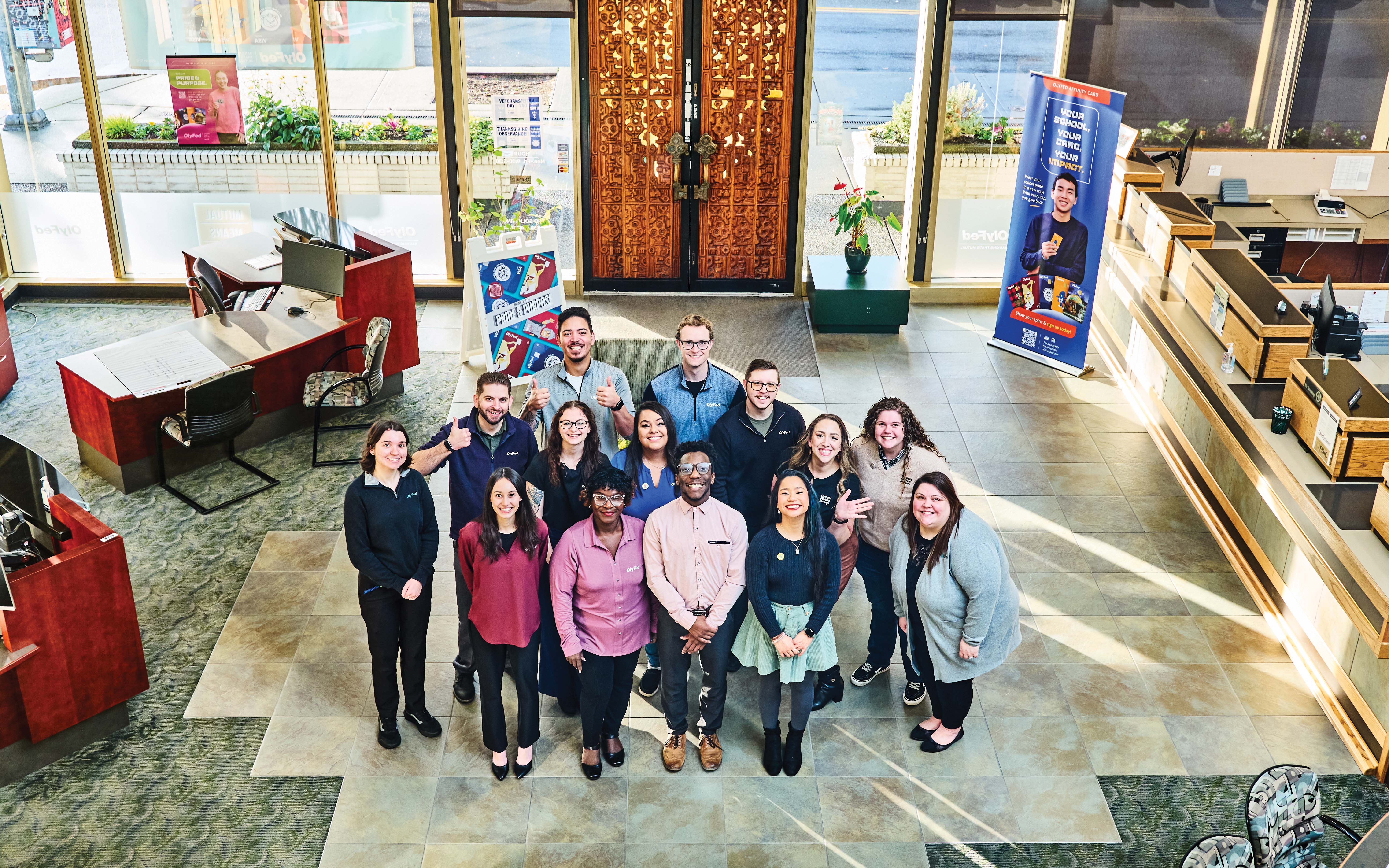By exploring and analyzing data-driven customer insights, community banks can enhance their personalization efforts to deliver proactive solutions with enhanced trust.
Personalization Strategies, Driven by Community Bank Data
November 03, 2025 / By Jen A. Miller
By exploring and analyzing data-driven customer insights, community banks can enhance their personalization efforts to deliver proactive solutions with enhanced trust.
Community banks have always been known for their personal touch, but digital transformation initiatives have created opportunities to use existing data to further personalize how banks work with their customers and anticipate what products a customer is going to need—perhaps before they even know they need it.

“That’s what we’re trying to achieve … in more ways than just waiting for them to ask, or waiting for them to strike up a conversation,” says Blake Heid, president and CEO of $738 million-asset First Option Bank in Osawatomie, Kansas. “We all know people need certain services. How do we take it to the next level?”
A report from Dynamic Yield found that 72% of consumers think products tailored to their individual needs are more valuable to them than those that are not. Community banks are starting to answer this desire for personalization.
Banks and customers want personalization
Four years ago, First Option Bank began working with a customer relationship management (CRM) platform that not only enables bankers to input information about their customers but also allows them to see everything about a customer’s accounts with the bank.
“If we didn’t really understand who our customers were … how could we know what the next best product would be?” says Heid.
First Option Bank started building systems to collect and analyze data, because the community bank wanted to know their customers better and anticipate what they would need.
“I can drill down in so many different areas to look at how they’re utilizing our banking services,” says Heid. “That’s where the beautiful part of that data kind of comes in. You’re not making a decision just based off what you remember, or a check box that says, ‘Yes, they have it.’”
Such a picture gives community bankers a broader understanding of their customers, allowing them to see what services the bank has that those customers are not using, or what they might need in the future based on their assets or simply their age. According to Heid, this helps bankers to identify how to provide those opportunities for those customers.
Prior to its systems development, First Option Bank had used the Uniform Bank Performance Report once a year, which showed how a bank compared with its peers.
But, as technology overall has changed and improved, First Option wanted something that would enable its team to make decisions without being beholden to someone else’s timeline. “How do I make a decision even faster, because everything around us is moving faster?” says Heid.
In the mid to early 2010s, the community bank moved to Deluxe’s Banker’s Dashboard, which was an improvement because it meant getting data on a “monthly basis to be able to see things a little bit better,” Heid says.
Getting the right data

Tom Hershberger, chief strategy officer and founder of consultancy Cross Financial in Lincoln, Nebraska, says community banks already have plenty of basic information about their customers (see sidebar). But according to Hershberger, getting to the next level of data collection to analyze and consolidate data and analytics is often the challenge.
“Most banks do not have a centralized system that manages customer information outside of the required information to set up accounts,” he explains.
Banks can start by learning how customers feel about their interactions with the bank through inputs like customer reviews and feedback. Ideally, banks would move from gathering feedback once a year toward a more rolling approach, with new information “dripping in” throughout the year, says Emily Sayer, national sales director for Avannis.
That could mean asking for feedback after key interactions, such as after a loan is closed, after opening a new account or simply after completing a digital banking transaction. These “all have different drivers,” Sayer says. She adds that knowing those data points can help banks determine which questions to ask and what behaviors to gauge.
Sayer says there is so much about personalization that is service related. Getting such feedback can, for example, help a bank see that a customer is considering different services, which a banker can then contact them about. It can also present more opportunities for almost anyone at the bank to advise customers of products that might benefit them.
A teller may not think they’re a salesperson, for example, “but if they just ask a simple question or take a look at their computer and say, ‘Oh, this person has a certain kind of activity; they could use this type of product,’” Sayer says. Instead of seeming intrusive by knowing too much, “that garners a lot of loyalty from customers.”
Overcoming the hurdles of data management
The challenge for community banks that want to start their personalization journey isn’t necessarily a lack of data. It’s what to do with the data they already have. “Banks are absolutely inundated with data,” says Hershberger.
However, he says, “Some of the data could be added to the bank’s core system at the account level or as part of the customer information file.”
It also might not technically be in the core but in third-party software added on to it. “[Most of the important information is] in there somewhere, but it’s just too hard to manage,” Hershberger adds.
Another challenge of personalization via data, he says, is that most modern systems that have this capability use artificial intelligence, which is slowly starting to be embraced by community banks. Due to the fear that widespread use of generative AI tools increases the risk of data security, possible breaches and fraud, community banks aren’t going to see the same level of data personalization that other, less heavily regulated industries might pursue.
While some community banks may feel that they don’t have enough data to even get anywhere, whether because of their bank’s size or because they feel they are not far enough along on their data journey, they still have enough to get started.
For community banks that proactively collect information about customer goals related to finances, retirement, career, family, business ownership or even hobbies, “it would be easy to begin identifying what financial solutions would be the best fit at each stage of the customer’s life,” says Hershberger.
Each life stage during a customer’s tenure with a bank might require different financial services. For example, what could banks do if they knew a customer or customer’s child would be graduating from college this year, a married couple was having their first baby or a customer is turning 65 and likely to retire?
Transactional data can also help banks learn more about their customers. If a customer has a monthly automatic payment to a home security company, they might own a home. If that customer also makes a monthly payment to a local lawn care company, “that homeownership assumption becomes more likely,” Hershberger says.
Use the data you already have
Even basic data can inform your personalization strategy.
Behavioral: The bank products customers already use
Transactional: Service usage level
Demographic: Contact information, birthdate, first names of residents in a household, children present in the home, occupation and income
Practical first steps
Quick Stat
72%
of consumers think products tailored to them are more valuable than those that are not.
Source: Dynamic Yield
Small steps toward data personalization can include increasing the frequency of customer surveys or building a CRM, and then integrating data from the surveys into the CRM. These steps can also help banks start their data journey in phases, which can make costs more manageable. The idea is to make some changes now that can be built upon, leading to a more robust data personalization system in the future.
“It’s not an easy process to validate the data and then to interpret the data,” says Heid. But once First Option Bank went through that sometimes-tedious process, it was able to build dashboards, which means that “we’re able to have a really good holistic view of our customers.”
CRMs and dashboards built from them help community banks get a better handle on customer data in a way that it can be shared among frontline employees.
“That personalization piece is one of the most powerful parts of how we build relationships,” says Hershberger. “We rely on it once we’re face to face. We want to know customers by name, want to shake a hand, [and] want to get to know a family and a business.”
Subscribe now
Sign up for the Independent Banker newsletter to receive twice-monthly emails about new issues and must-read content you might have missed.
Sponsored Content
Featured Webinars
Join ICBA Community
Interested in discussing this and other topics? Network with and learn from your peers with the app designed for community bankers.
Subscribe Today
Sign up for Independent Banker eNews to receive twice-monthly emails that alert you when a new issue drops and highlight must-read content you might have missed.
News Watch Today

Join the Conversation with ICBA Community
ICBA Community is an online platform led by community bankers to foster connections, collaborations, and discussions on industry news, best practices, and regulations, while promoting networking, mentorship, and member feedback to guide future initiatives.













